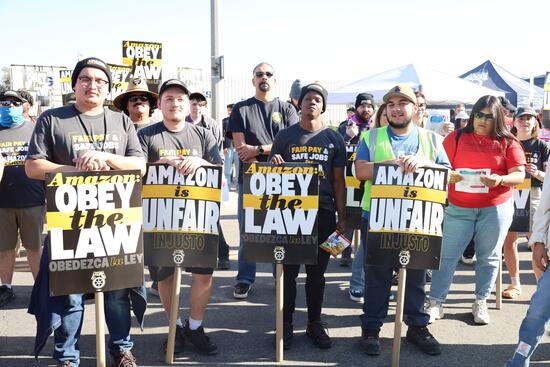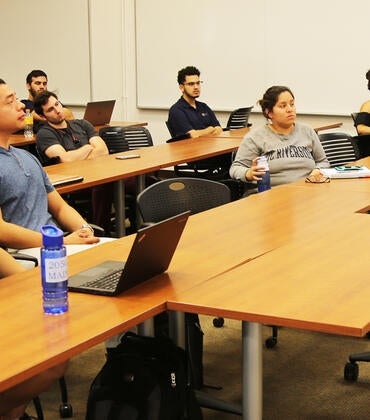
Almost one in 15 of the 1.7 million people employed in Riverside and San Bernardino counties is a warehouse worker. Many earn low wages—roughly 75% of what the average worker in the region earns—while facing dangerous working conditions and setbacks in gaining union recognition.
However, this growing workforce has made historic gains in organizing and heat safety. In “State of the Unions: California Labor in 2024,” University of California, Riverside researchers offer details on the growth, salaries, ethnicities, and ongoing struggles of warehouse workers in Riverside and San Bernardino counties in the chapter “Inland Empire Warehouse Workers’ Organizing and Policy Victories in 2024.”
At the literal hub of the story is Amazon’s air cargo facility at San Bernardino International Airport, one of eight such hubs in the U.S., and the company’s largest on the West Coast. Alongside robots and ultramodern machinery, about 1,000 Amazon employees handle a stunning 18,000 shipments per hour. But unlike robots, humans get stressed in the Inland Empire heat. Enter Cal/OSHA, which ruled in favor of improved cooling interventions after Amazon workers voiced concerns and filed legal complaints, with the support of the Warehouse Workers Resource Center, during a growing worker-led organizing campaign. Amazon paid a $14,000 fine and took corrective action.
After years of organizing, initially as members of the Inland Empire Amazon Warehouse Union (IE-AWU), workers won increased wages and safer working conditions. In December 2024, the majority of Amazon warehouse workers in the San Bernardino air cargo facility authorized the Teamsters to represent them. Amazon refused to recognize Amazon Teamsters’ new unions around the country and failed to file for a union election through the National Labor Relations Board (NLRB). In response, Amazon warehouse workers and delivery drivers at nine facilities went on strike a week before Christmas. Although the strike garnered national media attention, delayed holiday deliveries, and increased pressure on Amazon, the company continues to dispute the unionization of its warehouse workers.
“Amazon workers in San Bernardino and across the country are organizing and winning in ways many thought were impossible,” says Jesús “Chuy” Flores, policy and strategy director of UCR’s Inland Empire Labor and Community Center (IELCC). “If Amazon recognized the Teamsters’ new union and bargained in good faith with them, we would likely see a much smoother, undisrupted holiday shopping season in 2025.”
Released on August 25, 2025 data from IELCC researchers, Flores, David Mickey-Pabello, and Ellen Reese, reveal that nearly one in 15 workers in the Inland Empire is employed in warehousing. The average non-supervisory warehouse worker earns $44,776, which is roughly 75% of the average for IE workers. Latinos constitute 42% of the IE’s workforce, but almost 62% of warehouse workers. The growth of non-managerial warehouse work has outstripped other types of labor, increasing 54.9% between 2014 and 2023, while other occupations grew 27.5%. One category of workers, hand packers and packagers, grew by 125.8%, while their average wage of $42,850 is the lowest among warehouse labor and lags well behind the IE average salary of $61,930.
“The IE appears to be growing with either high-paying or low-paying jobs, but there is no growth for middle-class jobs,” said Mickey-Pabello, research director at the IELCC. “We generally believe that a more diverse economy would greatly benefit the area, as an over-reliance on logistics could expose us to the risks associated with that industry, for example, tariffs and automation.”
The UCR chapter on Inland Empire warehouse labor begins on page 66 of the 2024 State of the Unions report.




